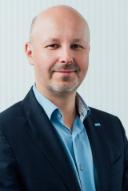Energy efficiency and emissions reduction are no longer optional — they are vital for business survival. With rising energy costs and the phasing out of free emission allowances under the EU ETS, embracing sustainability is not just a strategic advantage but a matter of competitiveness. “That’s why the MORE4Sustainability project, supported by Interreg NWE, has proven to be extremely valuable. As project partners, we found ourselves pioneering more than we initially anticipated,” says Wim Vancauwenberghe, Director of BEMAS. The goal? To initiate a sustainable transformation in asset management, with a focus on energy efficiency and emissions reduction. The approach? Solid research, structured methods, and above all: practical application.
One of the key findings of the project was that sustainability is still insufficiently embedded in maintenance and asset management practices. Already in the initial project phase, it became clear that the link between these fields is underdeveloped. Rob van Dongen of Mainnovation, leader of the benchmark study, explains: “We had to actively seek out early adopters. But once identified, they provided valuable input for the study.” This input laid the foundation for the Sustainable Asset Management Framework, which was developed and refined throughout the project.
From best practices to structured
methodology
This framework became the beating heart of the
project. It combines scientifically grounded principles with a practical,
results-oriented approach. “It quickly became clear that sustainable asset
management can generate real impact,” says Van Dongen. “Improving energy
efficiency, reducing greenhouse gas emissions — it’s possible, but it requires
a structured approach.” Training sessions held in Belgium, the Netherlands,
France and Germany confirmed the framework’s value in practice. “Participants
contributed their own cases and ideas, which led to rich interaction and
further refinement. The framework helps organisations structure their internal
processes and achieve measurable results.”
“Without a structured approach, sustainability in asset management remains a nice idea. The MORE4Sustainability framework makes it concrete, measurable, and applicable in practice.”

Saving energy and reducing emissions:
from ambition to necessity
Today, sustainability is more than a moral
obligation — it's a business imperative. In the current economic context, it
has become a hard necessity. European companies are struggling with high energy
prices and losing competitiveness against companies from regions where energy
is significantly cheaper. Without taking serious steps to improve energy
performance, companies risk losing their competitive edge. On top of that, Pressure
is also growing on emissions reduction. Under the EU Emissions Trading System
(ETS), companies that emit less CO₂ than their allocated allowances can sell
the surplus. But from 2026 onwards, free emission allowances will be gradually
phased out and replaced by the Carbon Border Adjustment Mechanism (CBAM). This
means that companies will receive fewer and fewer allowances AND will have to
pay much more for their emissions in the future.. The conclusion is clear:
companies that fail to reduce emissions will pay more — and find it even harder
to compete.
A new mindset and way of working
As one training participant put it, “This course
changed how I think. It introduced a different methodology for working
sustainably.” This sentiment was widely shared. Participants particularly
valued the financial perspective embedded in the training — not just the costs,
but also the potential gains of investing in sustainability. Some even
recognised broader potential. One comment read: “The MORE4Sustainability model,
with some adjustments, could also be applied to other departments’
sustainability goals.”
A focused scope, for maximum relevance
As with any project, there were also critical
reflections. The one-day training was dense, covering a lot of material in a
short time. Some attendees regretted that other topics — such as circularity or
wastewater treatment — weren’t included. Wim Vancauwenberghe: “We deliberately
chose a clearly defined scope. Under the Green Deal, industry faces the
challenge of meeting strict requirements around energy efficiency and emissions
reduction. We wanted to address this in a structured and in-depth way. That
quickly generated a wealth of new insights, which made the training programme
quite intensive. But we are very pleased with how it turned out.” Rob van
Dongen agrees: “Overall, participants are very positive. Many share the sense
that sustainability will become a fully integrated part of maintenance and
asset management within a few years. By the way, that’s also my personal conviction.”
“Those who don’t invest in energy and emissions reduction today will pay the price tomorrow — both literally and figuratively."

E-learning as a lever for wide
application
After the benchmark study, the training series and
the publication of the roadmap, the project has entered in a phase of digital
upscaling. A multisession e-learning has become available in four languages.
Its seven modules deliver the same methodology as the classroom sessions but
allow participants to learn at their own pace. Wim Vancauwenberghe: 'By 1 July
2025, more than 500 maintenance and asset management professionals in Belgium,
the Netherlands, France and Germany had already followed some form of the M4S
training. They can now also take the e-learning modules online and participate
in the online test to obtain the "Certified Sustainable Asset Management
Practitioner" certificate. Newcomers can either attend a one-day paid
classroom training course, or complete the e-learning for free.” The online offering is fully
modular. Participants can navigate according to their own needs, repeating what
is needed and speeding up where desired. The e-learning is also ideal during
quieter periods such as the summer months. Upon completion, the certification
exam follows, and with a satisfactory score, the participant receives the
official certificate. 'That is a wonderful incentive,' says Vancauwenberghe. 'It’s
a tangible personal recognition that also reflects positively on your
organisation’s sustainability ambitions.'
Time to get started
While the development of learning tools has
formally concluded, the project’s impact continues. New training dates are
already planned in Belgium and the Netherlands. In addition, the results of the project have
also been compiled in a Roadmap document, including a self-assessment tool and
a calculation model for business cases. Now more than
ever is the time for maintenance and asset management organisations to take
action. But to succeed, everyone involved must first understand the core
concepts, and know how to implement targeted energy and emissions reductions
through maintenance and asset management. Those interested in going through the
seven MORE4Sustainability modules and obtaining the certificate in the coming
months can visit the project website for more information:
https://more4sustainability.nweurope.eu.
The e-learning and training are available in English, French, German and
Dutch.